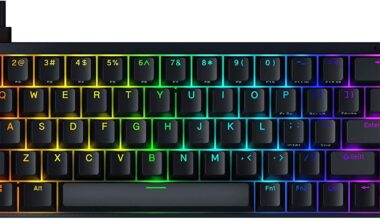Arranging furniture in a small home office space can be tricky, especially when you have all the essential office furniture but lesser space to spare.
So, how do you arrange the furniture into a small space while keeping it well-aerated and spacious enough to move around?
Choose flexible furniture, such as modular and portable pieces, that double as seating and storage. Otherwise, buy compact furniture or use vertical storage that takes less floor space.
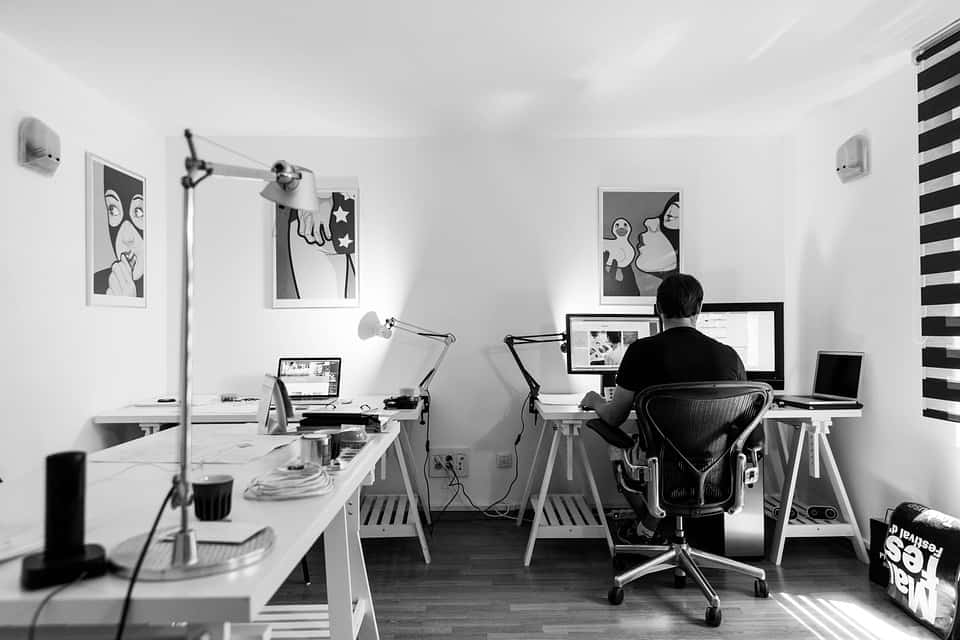
When arranging furniture in a small space, sometimes less is more! So, do not be heavyhearted, letting go of a few favorite furniture pieces.
Read on about arranging your small home office to fit all the necessary furniture without compromising on space.
Table of Contents Show
Design a Room Layout
Many remote workers often mistake buying or moving furniture into a home office before figuring out the arrangement.
As a result, they struggle to fit the furnishings in a room or quickly run out of space!
Thus, designing a room layout should always be the first step when arranging a small home office furniture.
Remember to decorate your small home office so you have enough space to sit, work, store, and move.
Here is a checklist to help design a room layout.
1. Keep the Entryway Clear
A heavily clustered entryway gives a feeling of a congested home office.
Avoid placing visually heavy objects away from the door, such as desks, cupboards, and storage shelves.
This helps to place large items away from your view when walking into your home office, giving a feeling of a spacious area. Try to keep a few things possible near the entryway.
However, if your room layout does not allow keeping your doorway spacious, consider using the adjoining wall space for storage to keep the floor space free.
2. Create Visual Balance
Distribute items evenly across the small office room to create a visually balanced space.
If one of the walls is covered with furniture, consider keeping the opposite wall furniture-free to create a balance.
Not everything has to go on the floor; use the wall space to add shelves to store items and free the floor space.
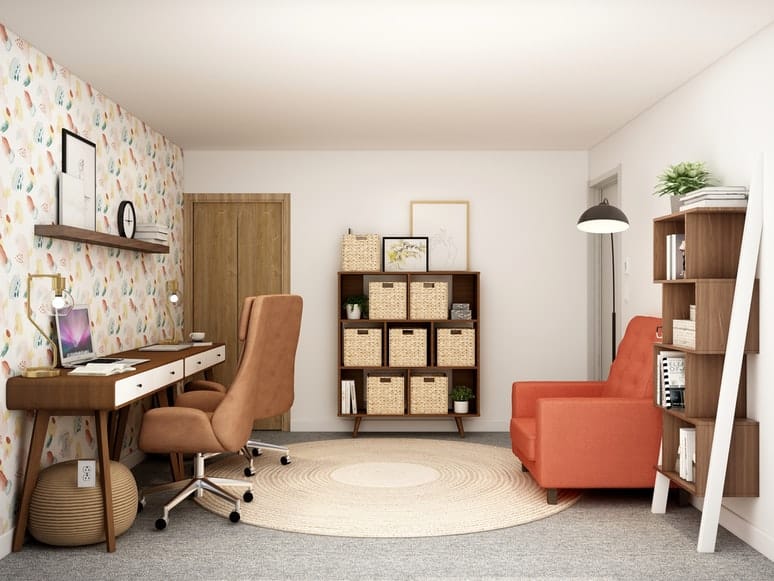
Also, use the decor and color of the room to create a visual balance. Keeping the furniture minimal for a room with white-painted walls will create an illusion of having more space.
Add more task lighting around the room to illuminate corners to make it look spacious.
3. Create the Focal Point
Mirrors are great to amp up the otherwise small workspace visually. Adding a mirror on the walls create a focal point by amplifying the natural lighting, convincing you that the ceiling is higher than it is.
They are also great for boosting the room lighting in a room by reflecting the natural lighting.
Check out our article on how you can smartly use mirrors to revamp your small home office.
4. Optimize the Wall Space
It may be tricky when working with a smaller space, but avoid pushing everything against the walls.
Use the room walls for vertical storage, such as hanging bookshelves, hanging storage shelves, bookshelves, etc.
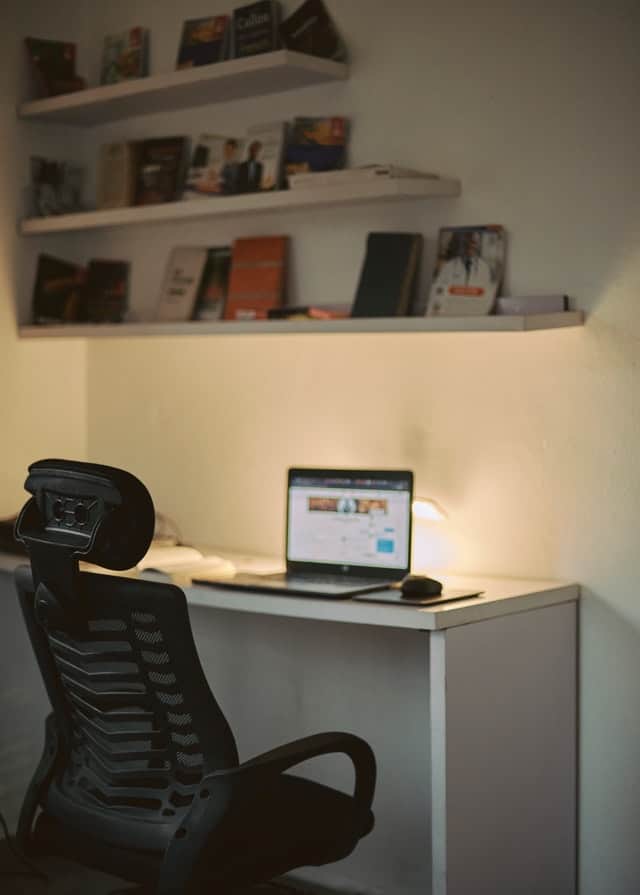
It will remove the floor’s clutter and stack it neatly on the wall. Using a wall space smartly will also give the room more fluidity.
Instead of pushing your desk to the wall, maintain a gap between the wall and the desk, you can place it a few feet away to move around the desk freely.
Moreover, you can use the available wall space to stack items from floor to ceiling to save floor space.
5. Be Conscious of Traffic Flow
Remember, a crowded room restricts your movement, making it feel like you are working in a cramped space.
Not to mention, a cramped room may increase the risks of workplace hazards like tripping on the wire, bumping toes on the desk, or stumbling on small items.
Minimalist furniture decoration is one way to improve traffic flow. In addition, avoid arranging furniture at the center that significantly eats up the floor space.
Otherwise, keep a few essential furniture pieces and leave the rest.
6. Make Full Use of Corners
Room corners are great for arranging furniture that would otherwise take up significant space when placed elsewhere.
You can use corner desks that would quietly sit on one of the corners, freeing up a lot of space to arrange other items.
Room corners are also great for placing large indoor plants, floor lamps, and chairs that would otherwise look odd elsewhere.
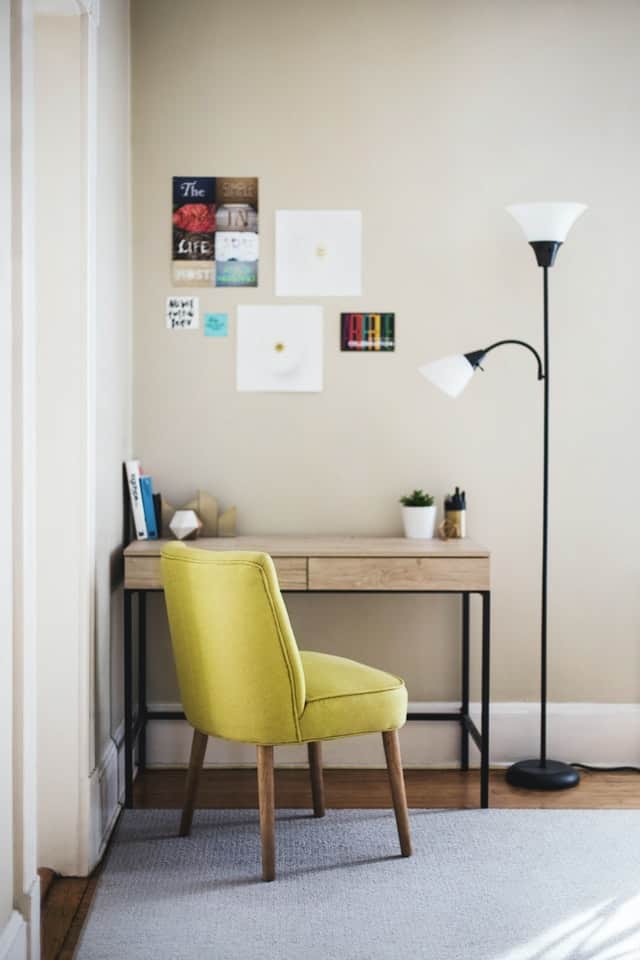
Read more on how to use an awkward corner for small home offices.
7. Draw a Room Plan
Drawing a room plan with exact positions and dimensions for furniture will help plan your room layout more smoothly.
Use a “Scale drawing” of your room if you want to plan your room layout accurately.
Otherwise, you can make a rough plan on paper to estimate the space each piece of furniture would take upon adding.
Whether you have a small space with a proper room plan, you can easily design a clutter-free space.
A 10-feet x 10-feet home office room can easily fit a 50×26″ single pedestal desk, two 40×16″ bookcases 56×11″ open shelves, with ample space to move around.

Let us assume that your home office space is somewhat unusual, like the one shown in the picture below.
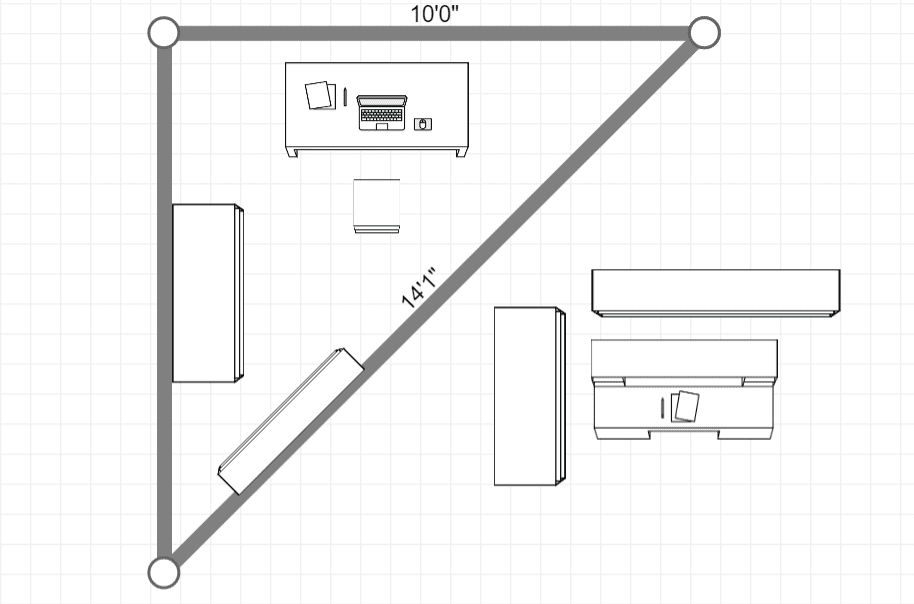
In this case, add only a few essential pieces of furniture and leave the rest. It will help optimize your room layout without taking up free space to move around.
Here is an online to-scale application to help you draw up a room plan instantly.
Consider reading our article on the average size for a small home office to determine whether your room is too small or large to turn into a home office.
Choose the Correct Furniture for a Small Home Office
Let us clarify; choosing the office furniture is not tricky but arranging them is!
There is only so much you can do with a small space. Thus, start with choosing the “must-have” furniture and move on to “nice-to-have furniture.”
| Must-Have | Nice-to-Have |
|---|---|
| Work Desk/Workstation | Sofa |
| Chairs | Bookshelves |
| Storage units and drawers | Storage racks |
The Must-Haves are the ones you would use daily, while the Nice-To-Have may include furniture you can usually do without in a home office.
Once you are sure what furniture you may need, the crucial step is choosing the right kind for a small home office space.
The type of furniture you pick must be bespoke or specialized for you and provide the utmost comfort.
1. Choose (Multi) Functional Furniture
As mentioned before, choose the furniture that you cannot do without.
Many remote workers mistake choosing fancy-looking furniture over functional ones and later regret it.
For instance, if your home office is too small to fit separate storage or drawer, getting a work desk with built-in shelves will be ideal.
The multi-functional desk will not only serve as a workstation but also help store office items without taking any additional space.
Here is another excellent example. If you dislike fidgeting through enclosed storage to find the correct item, buying open shelves or racks to store items will be more functional.
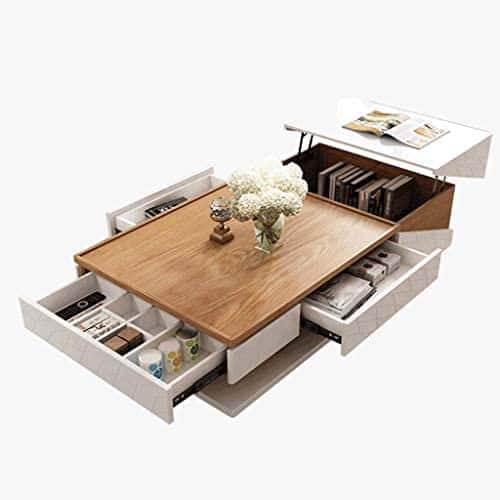
Therefore, choose furniture that offers the most functional benefits daily.
It would be even better if they were multi-functional because a small home office is less likely to fit many separate pieces of furniture.
Another great example is a coffee table that can turn into a work desk. It not only saves space but also adds style.
Otherwise, consider surfing online to find great ideas for multifunctional furniture suitable for your small home office.
2. Choose an Appropriate Workdesk
By appropriate work desk, we meant a functional work desk.
An office desk is a crucial part of office furniture, where you will spend most of your time working, making the desk an essential piece of furniture.
Remote workers may have different choices of work desks based on their work approach.
Here we have listed a few options based on their choices.
Traditional Desk
The traditional desk is the usual work desk that you often find in many office spaces. Also known as executive desks, they are designed for a single person. However, their bulky size may take up significant floor space.
A typical executive desk starts at 60x30x30 inches, which is quite big for a small home office.
Unless you need a big desk, choose to get one with a minimum width of 24″, depth of 15-18″, and height of 30″.
Although optional, you may ideally choose desks with built-in drawers when buying one. The traditional desks with drawers may take up more space than those without one.
Hence, decide whether your home office desk should have a drawer.
L-Shaped Desk
L-shaped desks make a great addition to relatively small office spaces. They add a lot of surface space without taking up too much floor space and often provide additional storage space.
The ample surface provides extra space to install multiple computer screens or even a tiny bookshelf and ensures that you get extra workspace within arm’s reach.
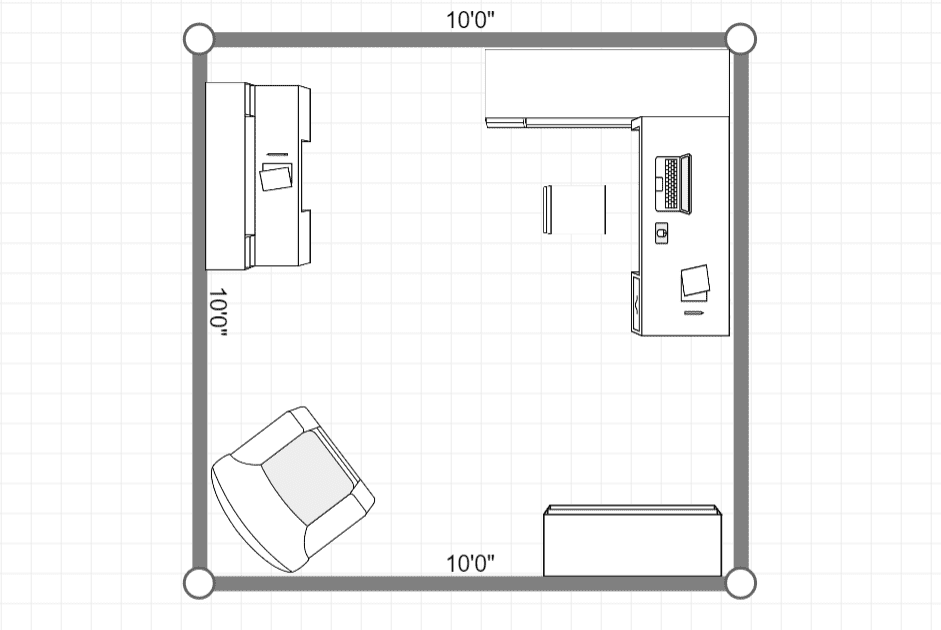
The easiest way to arrange an L-shaped desk in a small home office layout is to position it in one corner of the room.
| L-Shaped Desk | Specification |
|---|---|
| Bush Furniture L-shaped Cabot Computer Desk | Sixty inches of space on each side with four USB charging ports. It measures 30.16"H x 59.45"W x 59.45L |
| Cubi L-shaped Office Computer Desk | Extra space for desk accessories and made from durable wood material. It measures 67"L x 47.3"W x 29.53"H |
| L-shaped Green Forest Corner Desk | Water and scratch-resistant, durable wooden desk can be switched from L-shape to U-shape. It measures 58.1"L x 18.9" W |
Sit-Stand Desk
Setting up a sit-stand desk in your small home office may be a lifesaver because it takes up less space than a standard desk.
RoomSketcher.com reports that a standard desk usually requires an area footprint of about 42” (107cm) square, while a standing desk takes only around 18-20” of depth space.
Moreover, it is a multi-functional piece of furniture, so you can easily switch it between a sitting or a standing desk, as per your need.
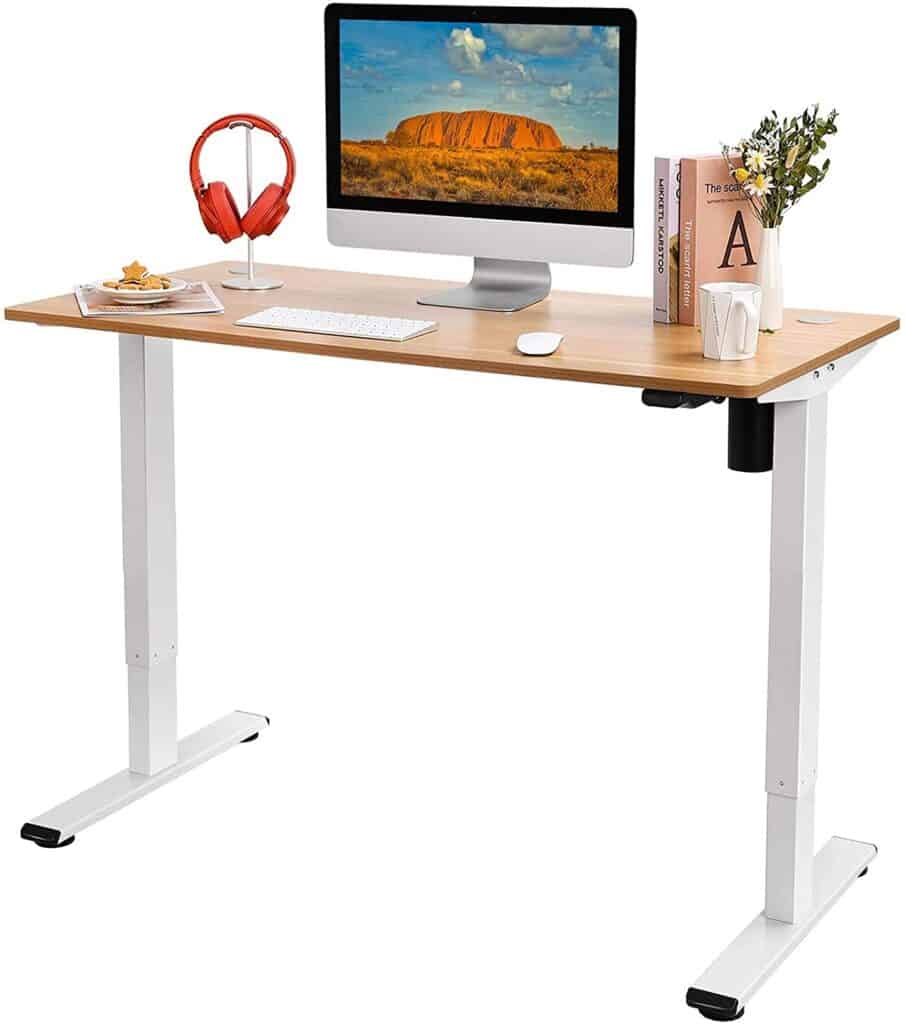
Some sit desks are designed exclusively for standing, sitting, and perching (semi-seated posture).
Choose a sit-stand desk with an electrical motor that adjusts seamlessly.
Here are a few options for you.
| Product | Specification | Image |
|---|---|---|
| Fully Jarvis Standing Desk | Full electric adjustable desk height with four customizable memory presets. Height: 24.5-49.7" Weight capacity: 350 lbs | 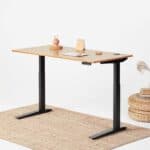 |
| FEZIBO Electric Stand up Desk Frame | Four lockable casters and cable management with touch controller. Height: 27.36"-46.06" Width: 43.31"-59.05" Anti-collision technology | 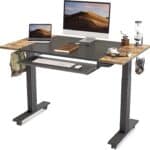 |
| ApexDesk Elite Series Electric Height Adjustable Standing | A stable and quieter electric desk frame with a powerful dual-motor lifting system that offers 1.5" per second operation. Height: 29"-49" Weight capacity: 235 lbs | 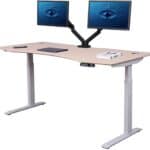 |
Floating Desk
A floating desk is another great idea for setting up a work desk in a relatively small home office.
Because of their compact size, they are perfect for even the most minor spots around the house or unused corners like windows.
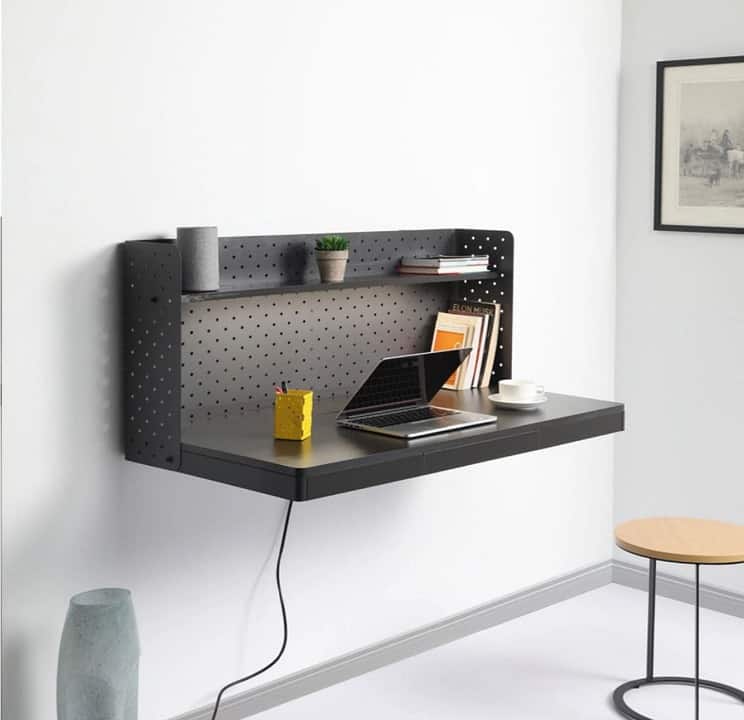
In addition, they are way more affordable than traditional desks and look much cleaner.
If you need a portable floating desk, consider installing a foldable floating desk that folds up to the wall.
However, the amount of weight a floating desk can carry will depend on the material of the shelf, the number of studs, and the depth of the rack.
A well-supported floating desk can even hold up to 300 pounds or 136 kg.
Also read: How to anchor a Book shelf to a wall?
Closet Desk
Using the old closet as a work desk can be a great idea because you would not need to buy a new desk or storage.
Also known as “Cloffice,” a closet repurposed as a home office to save space.
However, it may only work if you have a closet.
Check whether the closet shelves can be repurposed as office storage space.
If not, consider remodeling the slabs to make at least three layers: the bottom for a monitor and the middle and upper one for storage.
Find out more effective ways to improve your home office aesthetics.
3. Choose an Appropriate Chair
An office chair should be of minor concern because it takes up way less space than any other piece of furniture in a room.
When choosing an office chair, consider buying an ergonomic chair that is comfortable to sit for longer and lasts long.
An ergonomic chair is designed to keep your body in the correct posture, so you can avoid arching forward or slouching your back.
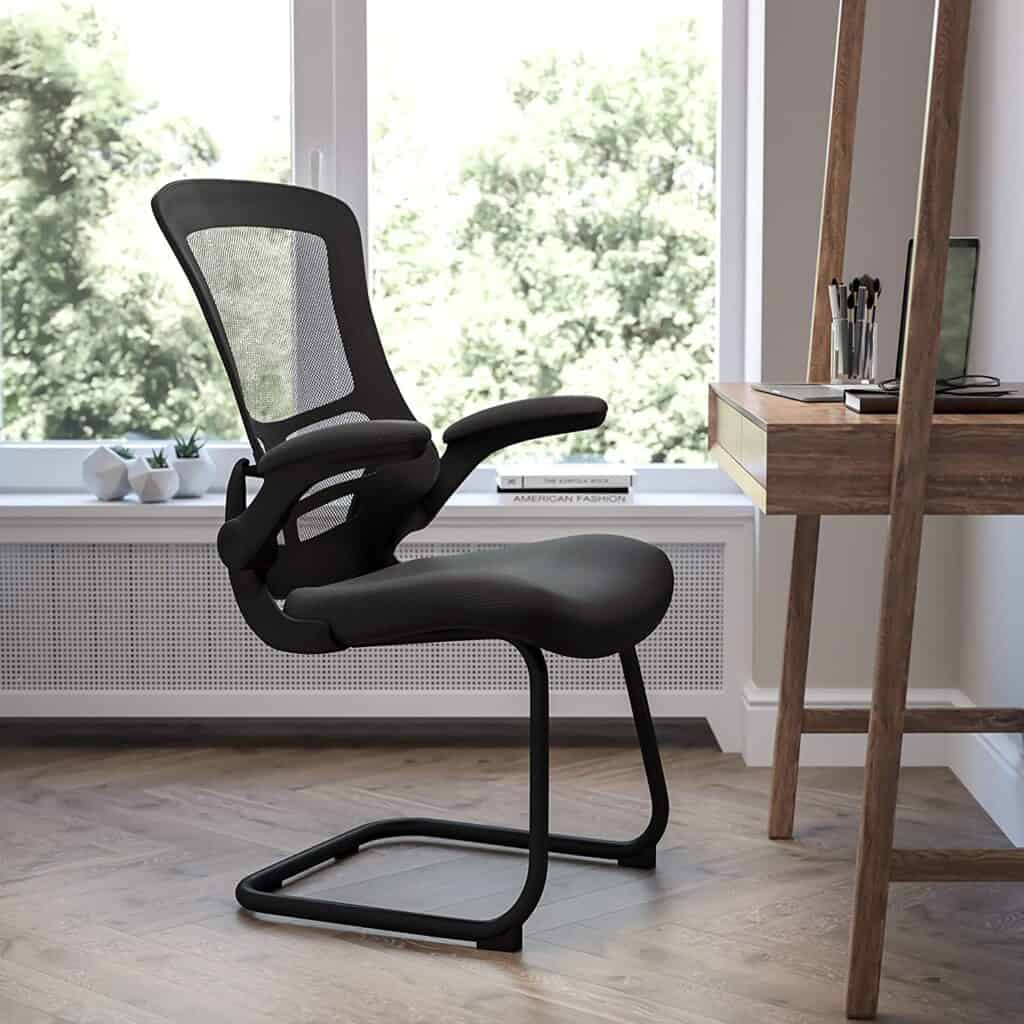
It often comes with a proper armrest, cushioned seating, and lumbar support for the lower back and neck support so you can rest your neck once in a while.
Wheeled chairs are also great as home office chairs because they offer better movability and flexibility; however, they can easily scratch hardwood floors and even quickly break under duress.
However, consider switching to alternatives if you suffer from lower back pain and do not like sitting on a regular chair.
Here are some office chair choices that make great alternatives to regular office chairs.
| Office Chair Alternatives | Advantages |
|---|---|
| Kneeling chair | Distributes body weight evenly |
| Exercise ball chair | Doubles as an exercise ball and an office chair |
| Reclining chair with laptop stand | Relaxing position with head rest, arm rest and foot rest. |
| Saddle stool | Helps strengthen back muscles |
| Wobble Stool | Improves blood circulation in the body |
4. Create More Vertical Storage
Vertical storage in a home office refers to installing units adjoining the wall.
Using vertical space helps save floor space and utilize unused wall space to store office items.
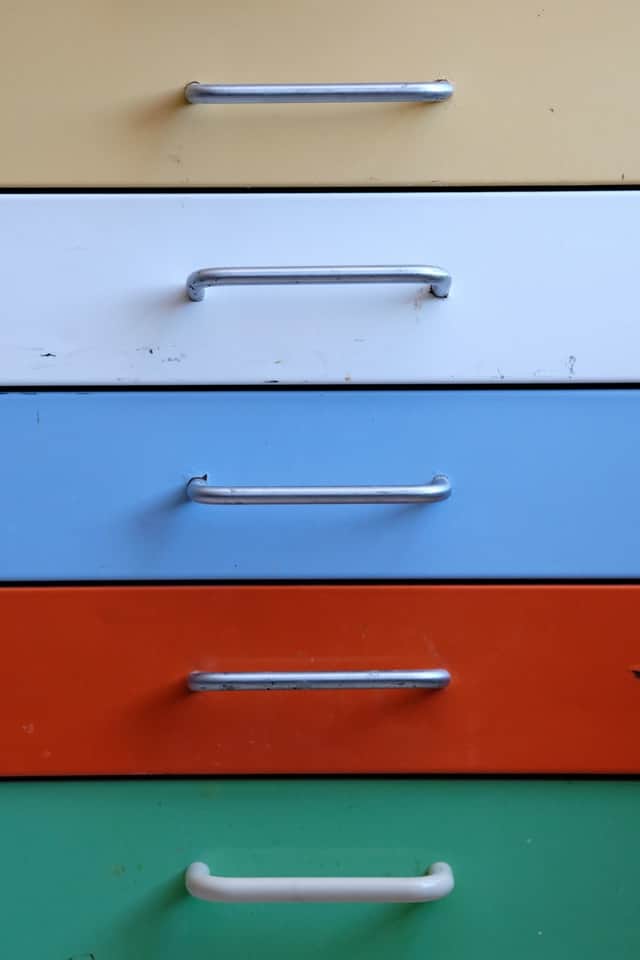
- Instead of placing a lateral file cabinet, you can use a vertical one that stacks up instead of sideways.
- Multi-layered open shelves, bookshelves, or racks are great for home offices with a bit of spare floor space.
- Hanging floating shelves on the wall is another excellent vertical storage idea that helps maximize vertical space.
Here are a few recommendations for vertical storage shelves.
| Vertical Storage | Specification |
|---|---|
| Corner Shelf Greenco | An easy-to-assemble wall mount shelf made from MDF wood. A decorative & multi-functional shelves with each shelf measuring 7.75" L x 7.75" W x 48.5" H. |
| IKEA Wall Shelf | The classic wall shelf from IKEA accommodates small items in a minimum of space and measures 11"D x 11.75"W x 74.75"H |
| Furologee Vertical 4 Drawer Dresser | The 3-tiers wood Shelf is excellent for small offices with no storage units. The open shelf on the top provides easy access to daily items, while the enclosed frames on the bottom are suitable for storing files. It measures 22.8"D x 11.4"W x 42.7"H. |
5. Convert your Dresser into a File Cabinet
If you have a spare dresser somewhere around your house, consider modifying it into a super storage space for a small home office.
A dresser works the same as a filing cabinet or an enclosed drawer that you can use to store important files and office items.
However, a dresser may look more appropriate for a bedroom than a home office.
Thus, consider remodeling the drawer before arranging it in your home office.
- Remove tiny drawers from the dresser and leave the lateral slabs.
- Insert metal file folder suspension frames to the slabs.
- Add a lock by drilling a hole appropriately to fit a small lock.
- Repaint the interior and exterior of the drawer with a more professional tone to match your home office.
6. Use Built-in Furniture
Built-in furniture is any furniture that remains a part of the permanent, immovable structure.
They are favorably used in bedrooms and drawing rooms to store and decorate many different items.
For small home offices, consider built-in furniture with a work desk, cabinetries, and storage shelves that easily fit on a single wall.
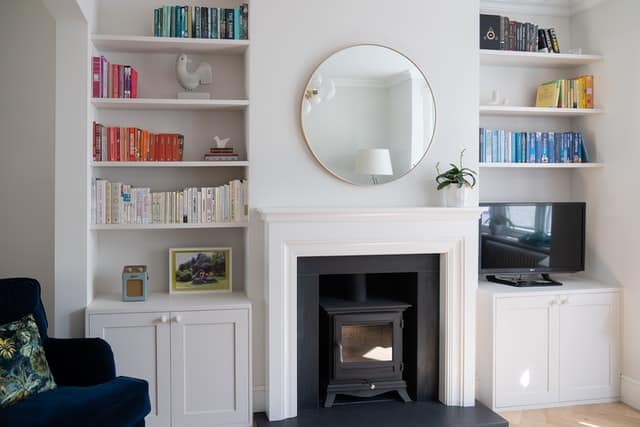
Using built-in furniture offsets the need to add separate desks and storage, saving a lot of space.
However, they may be more expensive than traditional furniture and are immovable, so consider buying one for your home office.
It is also time to consider decluttering your existing office space and bid farewell to items you do not use anymore. Removing scrapes will make way to add more essential items.
Read more to find out the average built-in desk cost.
The Bottom Line
A lot goes into creating a compact home office space, and choosing the proper layout and furniture plays a massive part in creating one.
Always look into compact, modular, and portable furniture that would fit even the most award corners.
Arrange furniture in such a way that does not eat up a lot of floor space or make an already compact office space look cluttered.
Additionally, work around the wall color and lighting to make your small home office look more spacious.


